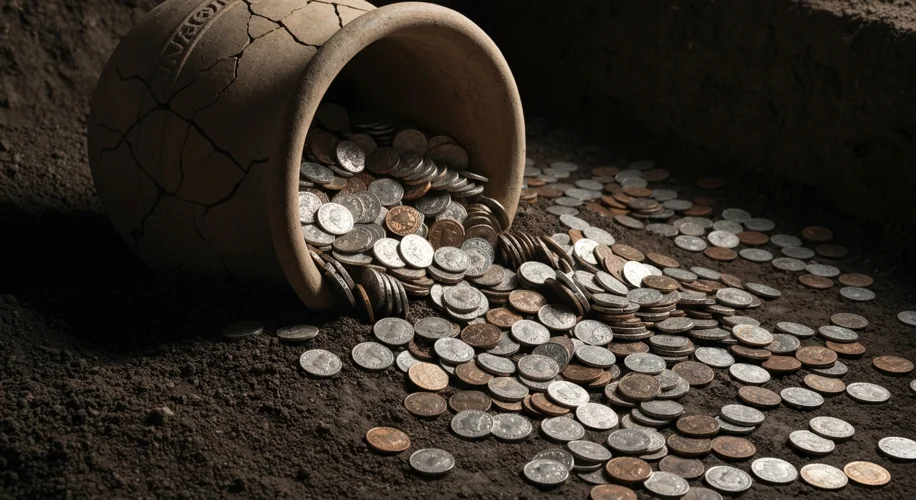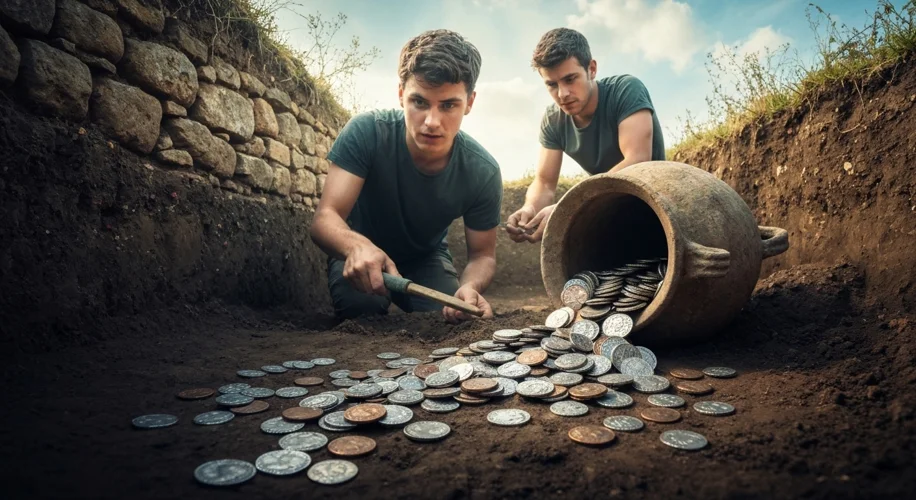Imagine the silence of centuries, broken only by the rustle of soil. Then, a glint of metal. Not just one, but thousands. This is the magic of a Roman coin hoard – a sudden, tangible connection to lives lived millennia ago. These aren’t just pieces of silver or bronze; they are fragments of stories, whispered from the earth, offering us a unique window into the vast, complex world of the Roman Empire.
The discovery of a Roman coin hoard is rarely a simple archaeological find. It’s an event, often tinged with a sense of drama and mystery. Picture a farmer tilling a field in rural Britain, his plow striking something hard. Or a construction crew digging foundations in Italy, unearthing a pot filled with ancient currency. These moments of serendipity have brought to light countless treasures, each with a tale to tell.
Consider the great Corbridge Hoard, discovered in Northumberland, England, in 1964. It wasn’t a single pot, but a collection of vessels, overflowing with over 5,700 coins. The latest coins dated to the reign of Emperor Severus (AD 193-211). Why were they buried? Who buried them, and why did they never return to reclaim their fortune? These are the questions that ignite the imagination.

The act of burying a hoard, or dens, was a deliberate act, often born of necessity or fear. During times of political upheaval, invasion, or economic instability, people would hide their wealth, hoping to retrieve it when safer times returned. The sheer scale of some hoards suggests that they were not merely personal savings, but perhaps the wealth of a community, a merchant, or even a tax collector trying to safeguard imperial funds.
The coins themselves are a historian’s goldmine. They bear the portraits of emperors, symbols of Roman power, and often inscriptions that tell us about political events, military campaigns, or religious festivals. By analyzing the denominations, the metal content, and the wear patterns, experts can reconstruct trade routes, understand the ebb and flow of Roman currency, and even pinpoint periods of inflation or debasement. For instance, the presence of coins from distant provinces within a hoard found in Britannia speaks volumes about the vast reach of Roman trade networks.
But hoards also tell us about the lives of ordinary people. A small, simple hoard found in a farmer’s field might represent a lifetime of savings, a dowry, or an emergency fund. These finds humanize the grand narrative of empire, reminding us that behind the legions and emperors were individuals with hopes, fears, and the need to protect their livelihoods.
The Great Roman Treasure of Beilen, found in the Netherlands, contained over 20,000 coins, mainly denarii, dating from the late 1st to the late 3rd century AD. Its size points to significant wealth and possibly a period of crisis that prompted its burial. Such discoveries are not just about wealth; they are about the moments of fear that drove people to hide it. Was it the pressure of barbarian incursions, or internal Roman strife? The coins offer silent clues.
The political context of the Roman Empire was often tumultuous. The 3rd century AD, for example, was a period of intense crisis, marked by civil wars, economic collapse, and frequent changes of emperors. During such times, the instinct to bury one’s wealth would have been paramount. Many hoards from this era offer a stark testament to the insecurity that pervaded the empire.
What is truly fascinating is the sheer geographical spread of these hoards. From the windswept moors of Britain to the sun-baked plains of North Africa, and the bustling cities of the Levant, Roman coins have been unearthed. This widespread distribution underscores the pervasive influence of Roman economic policy and the interconnectedness of its vast territories. It speaks to a common currency that facilitated trade and taxation across an immense dominion.
The story of Roman coin hoards is an ongoing one. Every new discovery adds another piece to the intricate mosaic of Roman history. They are tangible echoes from the past, reminding us that beneath our modern world lies a rich tapestry of human experience, waiting to be unearthed, one coin at a time. These buried treasures are not just relics of a lost empire; they are the very heartbeat of its economic and social life, laid bare for us to ponder.

